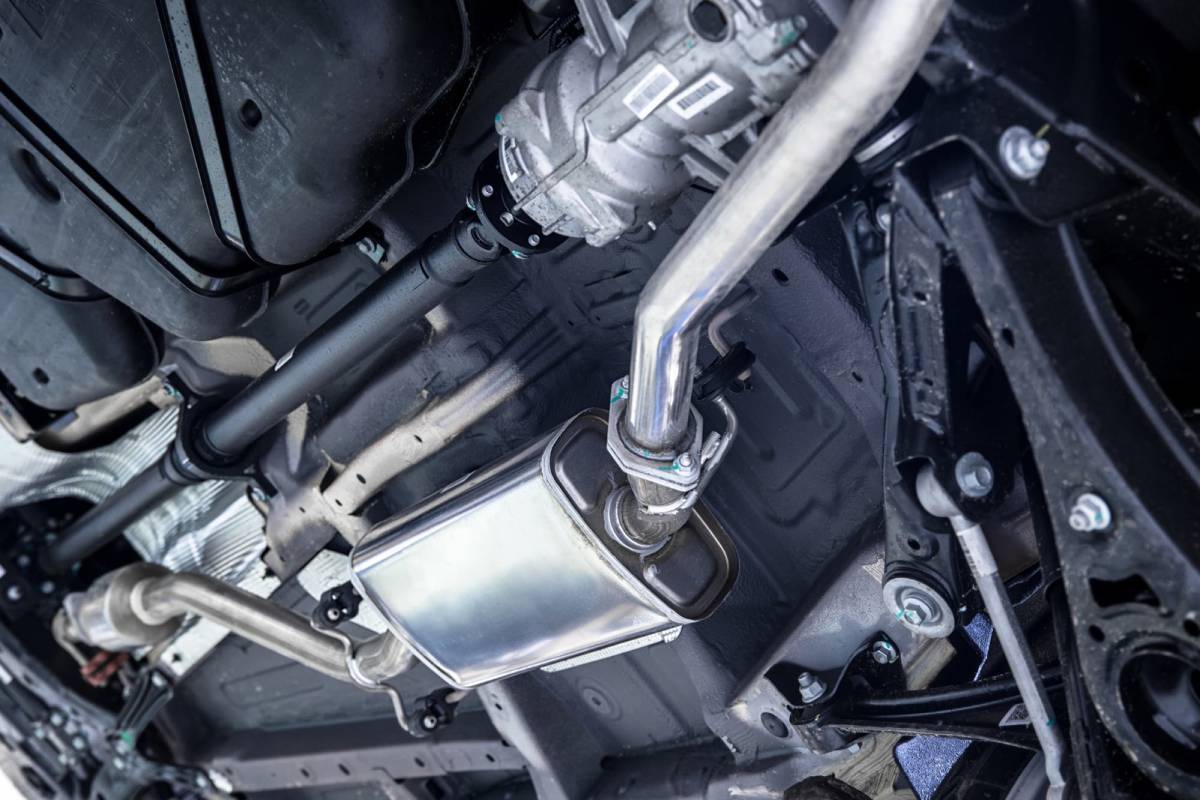What is an exhaust system: everything you need to know

Your vehicle’s exhaust system is made up of a complex system of pipes and devices that serve four essential functions: collect gases from the engine, remove harmful toxins from those gases, reduce engine noise and discharge the gases away from the car’s occupants. Knowing how your exhaust system works can help you identify problems and know when it’s time to take your car to a mechanic.
4 main parts of an exhaust system
A typical exhaust system consists of several units connected by metal tubes. These units are the exhaust manifold, the catalytic converter, the muffler and tailpipes.
1. Exhaust manifold. Also known as the exhaust header, this is where the entire system begins. The manifold connects to the vehicle’s engine to catch the gases created by burning gasoline in the cylinders. The manifold consists of a series of pipes that seal to the engine’s exhaust ports with flanges.
2. Catalytic converter. The engine’s waste gases travel down a series of pipes to the catalytic converter from the manifold. The gases contain poisonous substances such as carbon monoxide, nitrogen oxide and hydrocarbons. The catalytic converter holds metals such as palladium, rhodium and platinum. When the gases flow past these metals, a chemical reaction removes up to 90 percent of the toxins.
3. Muffler. The cleaned gases then move through a pipe to the muffler, an oval or cylinder-shaped chamber designed to reduce the noise from your car’s engine. Inside the muffler is a series of tubes designed to reflect soundwaves as they pass through. Mufflers can sometimes produce backpressure because the flow rate of gases entering the muffler decreases through the unit. Backpressure can impact your vehicle’s performance.
4. Tailpipes. After the gases have been cleaned and the noise reduced, the remaining air flows through the tailpipe to the vehicle’s rear, where it’s discharged into the atmosphere.
When you should have your exhaust system checked
If your exhaust system is leaking or damaged, harmful toxins can enter the cabin and expose you and your passengers to deadly gases. Consequently, it’s vital to visit a licensed mechanic if you notice any of the following symptoms:
- Excessive vibration
- Loss of power
- Increased fuel consumption
- Thick smoke coming from your exhaust
- Noise ranging from rumbling (usually caused by an exhaust leak), thumps or clunks (often due to a broken muffler) and loud clattering (signalling trouble with a catalytic converter)
Exhaust system and auto repair in British Columbia and Alberta
At Minit-Tune & Brake Auto Centres, we use only quality brand Original Equipment Manufacturer’s (OEM) parts for your exhaust system. Contact us at one of our 14 convenient locations to schedule an appointment.
MINIT-TUNE BLOG
Minit-Tune & Brake Auto Centres Address Common Issues
Here at Minit-Tune & Brake Auto Centres in British Columbia, we’re always pleased to help our customers get the most out of their cars and trucks. To that end, we’ll add a relevant blog topic from time to time to keep you up to date and getting the most out of your vehicle.
